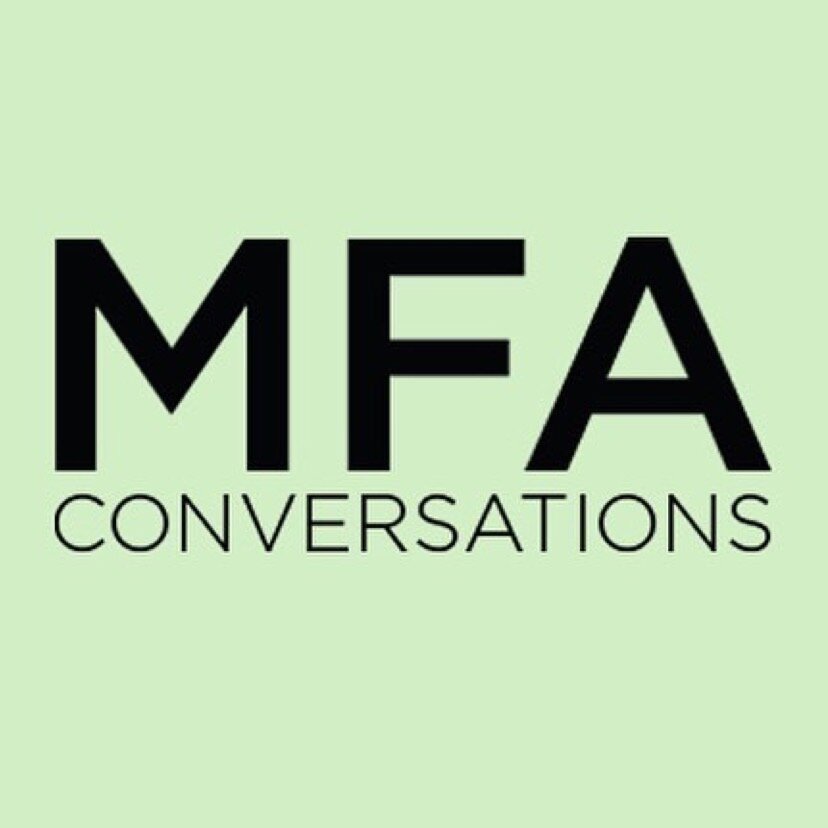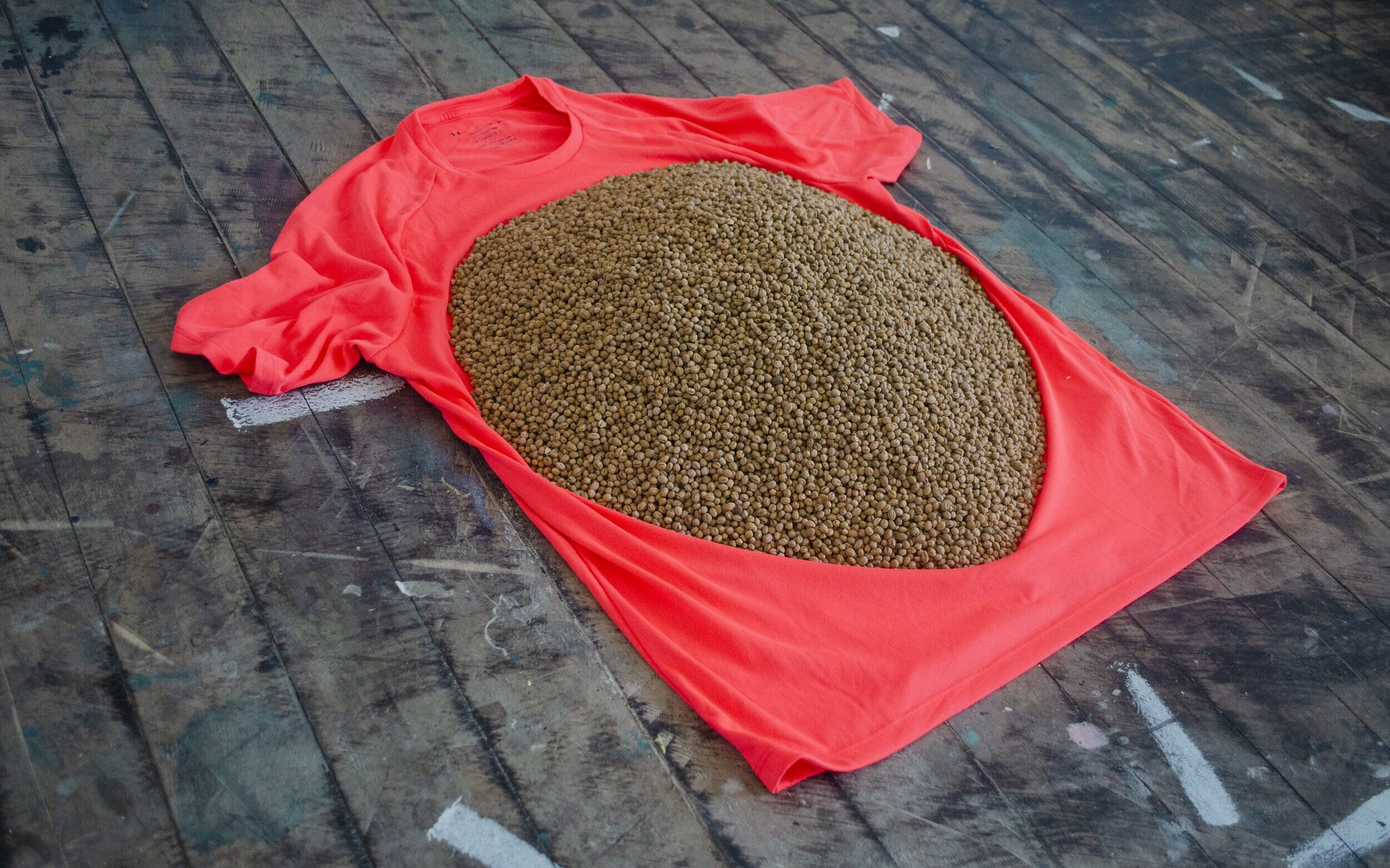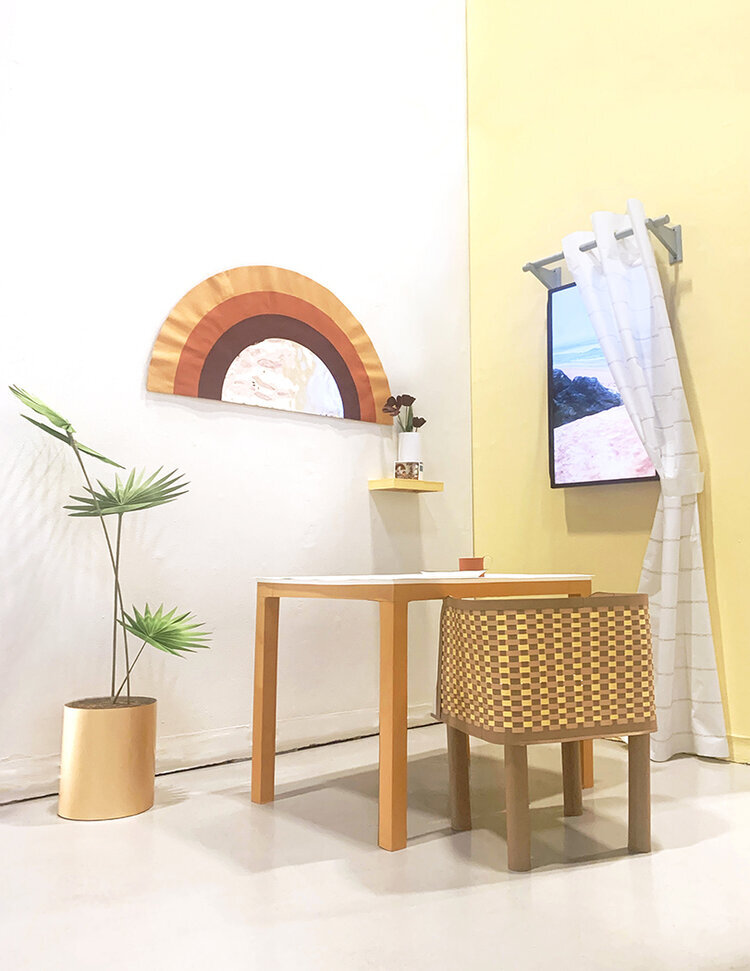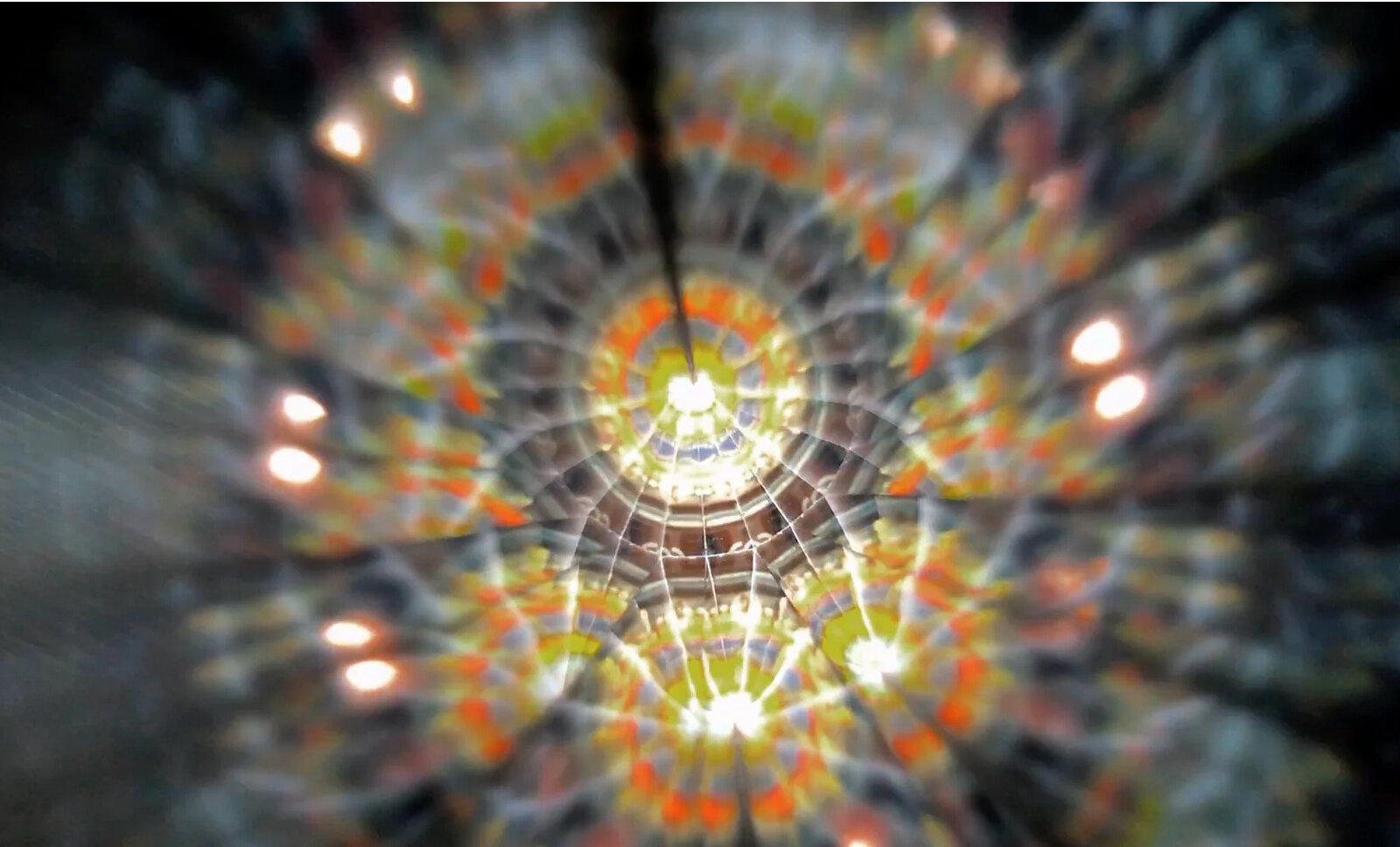NARGES POURSADEQI
CALIFORNIA COLLEGE OF THE ARTS
Tools for Mixing Ghosts, 2020
Mirrors, copper, globe glass, archive negatives
Courtesy of the artist
In 2012, NARGES POURSADEQI and her daughter immigrated to the United States from Iran. She earned her BA from UC Berkeley and then went on to CCA to earn her MFA this past spring. Narges' time at CCA changed her art practice, from focusing on cultural issues to expanding it to consider philosophical issues: “I am thinking about art as a talisman, how art can create cultural history, and how art has the power to change.”
Narges likes to collect childhood toys that have mechanical movement such as kaleidoscopes and View-Masters. She uses these toys in her artwork to help viewers digest difficult stories — taking painful places with brutal histories and fragmenting them until they become beautiful abstract images.
Tools for Mixing Ghosts, 2020
Mirrors, copper, globe glass, archive negatives
Courtesy of the artist
Tools for Mixing Ghosts was originally a sculptural piece meant for viewer interaction. She created three custom-made kaleidoscopes facing a container filled with liquid and negatives. The negatives are all images of places where massacres took place from WWII to the present. The viewer is meant to rotate the kaleidoscopes through the images, turning their violent histories into mesmerizing, colorful patterns.
Because of COVID-19, she could not present the work as intended to be touched in person, so she created a kaleidoscope that she could attach to her phone camera and made a video of the patterns. She also created audio to go with the video that features prayers and poems created from the massacre sites. A couple of her favorites are a Lakota prayer from the Wounded Knee Massacre and a poem by her favorite poet Forugh Farrokhzad.
Machine 855 is a recreation of a “looking box” the Persian King brought back from France. In Persian, it’s called “Shahr Farang” which means “Foreign Cities.” For her peephole cinema, she used images and videos from her childhood that resonate. Bruce Lee, Bollywood films, and a few Disney films are amongst the clips that represent the limited access she had to film and video in Tehran. She says Bruce Lee was popular, and she loves the colors in the Disney animations.
Reel No. 9 uses a View-Master toy. Another favorite childhood character was Zorro, and in this piece, she replaces the original View-Master imagery of that fictional icon with photos from the Iranian Revolution.
Screen capture on Zoom of Narges holding a view reel from Reel No. 9, 2019
Following up on our Zoom studio visit, the BAC Program Committee and Narges continued the conversation over email:
BAC: For your piece Tools for Mixing Ghosts, you use various audio of prayers and poems. Can you share with us the name of your favorite poet from Iran that you included in the audio?
Narges: The first piece of poetry is by Iran’s most celebrated contemporary poet, Ahmad Shamlou. He is narrating his poem “I Have Lived Death” in his own voice, starting with:
I saw death, in a sorrowful encounter.
The other poem that I used is from my most favorite poet, Forugh Farrokhzad, reciting from “Another Birth”:
My whole being is a dark chant
that will carry you
perpetuating you
to the dawn of eternal growths and blossoming…
The other sounds are mostly very simple prayers from different cultures.
BAC: You mentioned how much CCA changed your art practice. Is there a particular teacher who was influential in this change?
Narges: I worked with many professors during my master’s at CCA. All of them have been very helpful in their own ways. From talking about materials and technical aspects of my work to intellectual and thought-provoking concepts, I have great gratitude toward the CCA faculty. I think Frances Richard, particularly, had a major impact on me. She is simply an amazing teacher. Instead of correcting me from her own point of view, she pushed me to refine mine, by asking me the right questions. I leave behind a piece of my heart with theory class called Promises of Monsters.
BAC: Has your work, or the way you think about your work and practice, changed since the COVID-19 pandemic?
Narges: My thesis piece had to be changed during the pandemic. I had to convert an in-person interactive installation to a video performance. A recording of the performance replaced the installation, which was a huge change. Online presentation is now another aspect that I need to consider when planning my work and its process.
Zoom screen capture of Narges
BAC: In our Zoom visit, you talked about plans for future projects. Can you share with us what's next?
Narges: I have some ongoing projects that I am working on simultaneously. Repeated Mirrors is the one we talked about. It is going to be a geometrical one-person room enveloped with mirrors and magnifying lenses. I would love to build it as a public art [installation] if I can.
ARTIST BIO
Narges Poursadeqi was born and raised in Tehran, Iran. She received a BA at the University of California Berkeley and a MFA at California College of the Arts, 2020. Among awards she has received are a 2020 CCA Mentored Fellowship, a 2020 ALUMNX Residency at CCA, a 2020 Dennis Leon and Christin Nelson Scholarship, a 2019 Murphy & Cadogan Contemporary Art Award, and a 2019 Kala Art Institute Artist Award. Narges looks forward to teaching photography this Fall semester at CCA as part of her Mentored Fellowship.
Her work investigates the intersection of culture, memory, and narrative, and how each affects the other. Poursadeqi’s practice is derived by political events, culture, and religion. She works with archived photos, videos, and texts. Her role as a collector and storyteller allows her to create contemporary work that responds to political events, cultural movements, and contemporary religious discourse. The work exists in the process of finding the perfect casing, the perfect context for each object.
Machine 855, 2019
Papier maché, clay and machinery












